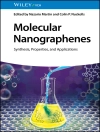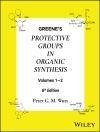How protein chaperones protect cells from neurodegenerative
diseases
Including contributions from leading experts, Protein Chaperones
and Protection from Neurodegenerative Diseases provides an in-depth
exploration of how protein chaperones are involved in shielding
cells from toxic aggregated or misfolded protein states that cause
ALS, Parkinson’s, and related diseases.
Examining how different protein chaperones ameliorate the
toxicity of proteins that are known to cause neurodegenerative
damage, the book addresses both research and clinical perspectives
on chaperone and anti-chaperone properties. The intersection of
molecular chaperones and neurodegeneration is an intensely studied
area, partly because of the potential for manipulating the
expression of molecular chaperones to thwart the progression of
debilitating diseases, and partly because of the ever-aging global
population.
Discussing the potential to harness the power of protein
chaperones, and future directions for research, discovery, and
therapeutics, this book is essential reading for scientists working
in the fields of biochemistry, molecular medicine, pharmacology and
drug discovery, biotechnology and pharmaceutical companies,
advanced students, and anyone interested in this cutting-edge
topic.
表中的内容
Preface.
Introduction.
Contributors.
1 Intrinsically Disordered Chaperones and Neurodegeneration
(Vladimir N. Uversky).
2 Redox Regulation of Protein Misfolding, Synaptic Damage,
and Neuronal Loss in Neurodegenerative Diseases (Tomohiro
Nakamura and Stuart A. Lipton).
3 Chaperone-Mediated Autophagy and Parkinson’s Disease
(Marta Martinez-Vicente and Ester Wong).
4 Chaperone and Anti-Chaperone Properties of Synuclein:
Implications for Development, Aging, and Neurodegenerative Disease
(Makoto Hashimoto, Kazuanri Sekiyama, Akio Sekigawa, and
Masayo Fujita).
5 The Ubiquitin-Proteasome System in Neurodegenerative
Diseases: More than the Usual Suspects (Anne
Bertolotti).
6 Regulation of the Polyglutamine Androgen Receptor by the
Hsp90/Hsp70-Based Chaperone Machinery (Andrew P. Lieberman
and William B. Pratt).
7 Amyloid Remodeling by Hsp104 (James
Shorter).
8 Chaperone-Dependent Amyloid Assembly and Prion Toxicity
(Daniel W. Summers, Katie J. Wolfe, and Douglas M.
Cyr).
9 Modulation of Amyloid Propagation in Yeast by Hsp70 and its
Regulators and Chaperone Partners (Daniel C.
Masison).
10 ALS and the Copper Chaperone CCS (Marjatta Son and
Jeffrey L. Elliott).
11 Emerging Area: Torsin A, a Novel ATP-Dependent Factor
Linked to Dystonia (Michal Zolkiewski and Hui-Chuan
Wu).
12 Therapeutics: Harnessing the Power of Molecular and
Pharmacological Chaperones (David S. Gross, Ronald L. Klein
and Stephan N. Witt).
Index.
关于作者
Stephan N. Witt is a Professor in the Department of Biochemistry
and Molecular Biology at the Louisiana State University Health
Sciences Center in Shreveport, Louisiana. He obtained his Ph D in
biophysical chemistry from the California Institute of
Technology.??Dr. Witt is a member of the editorial board of Cell
Stress and Chaperones. He has served on numerous NIH study
sections, has authored over forty scientific publications, and
edited a book on using yeast as a model for human disease. His
research focuses on identifying genes and small molecules that can
be used against Parkinson’s disease.












